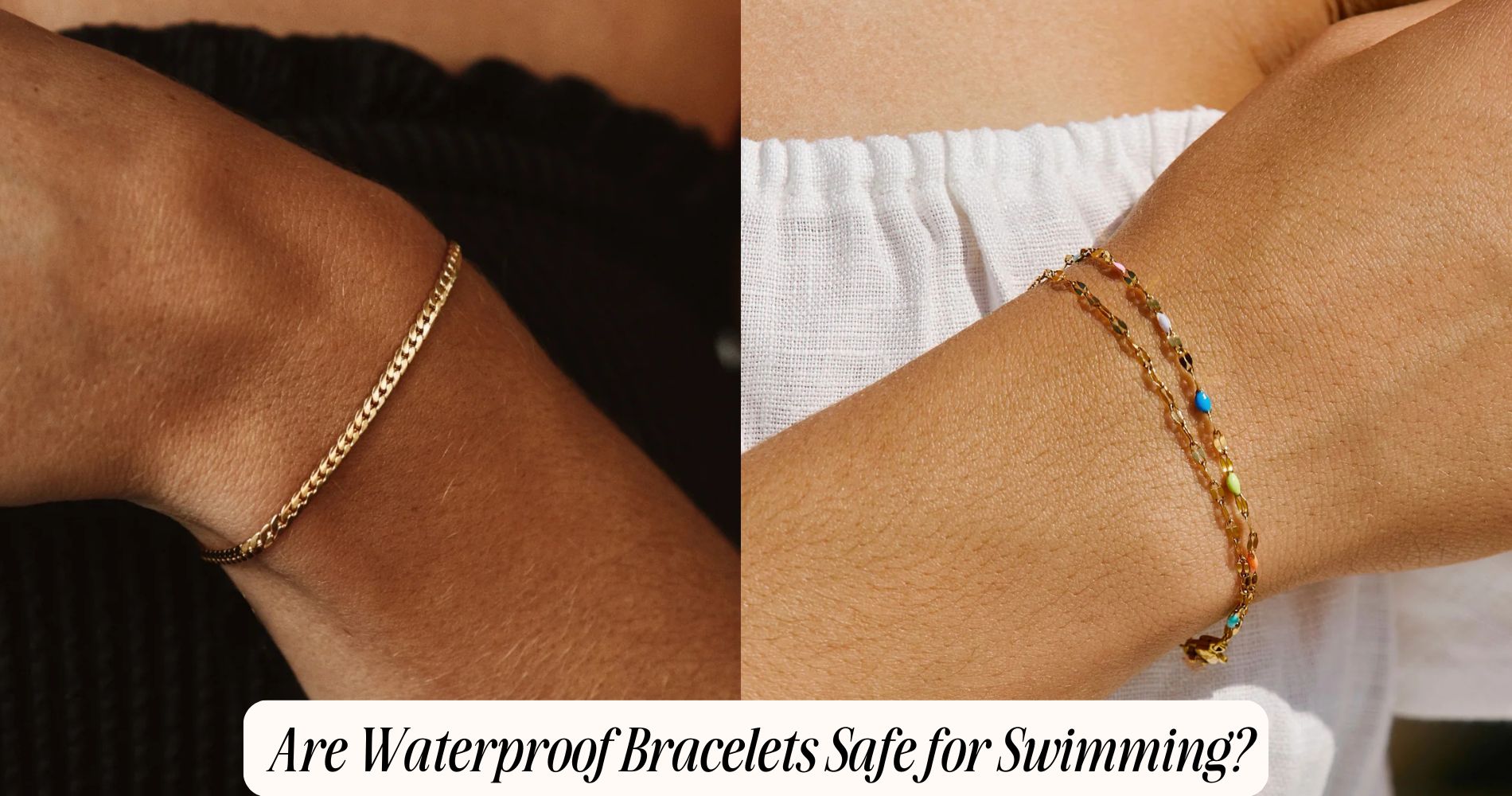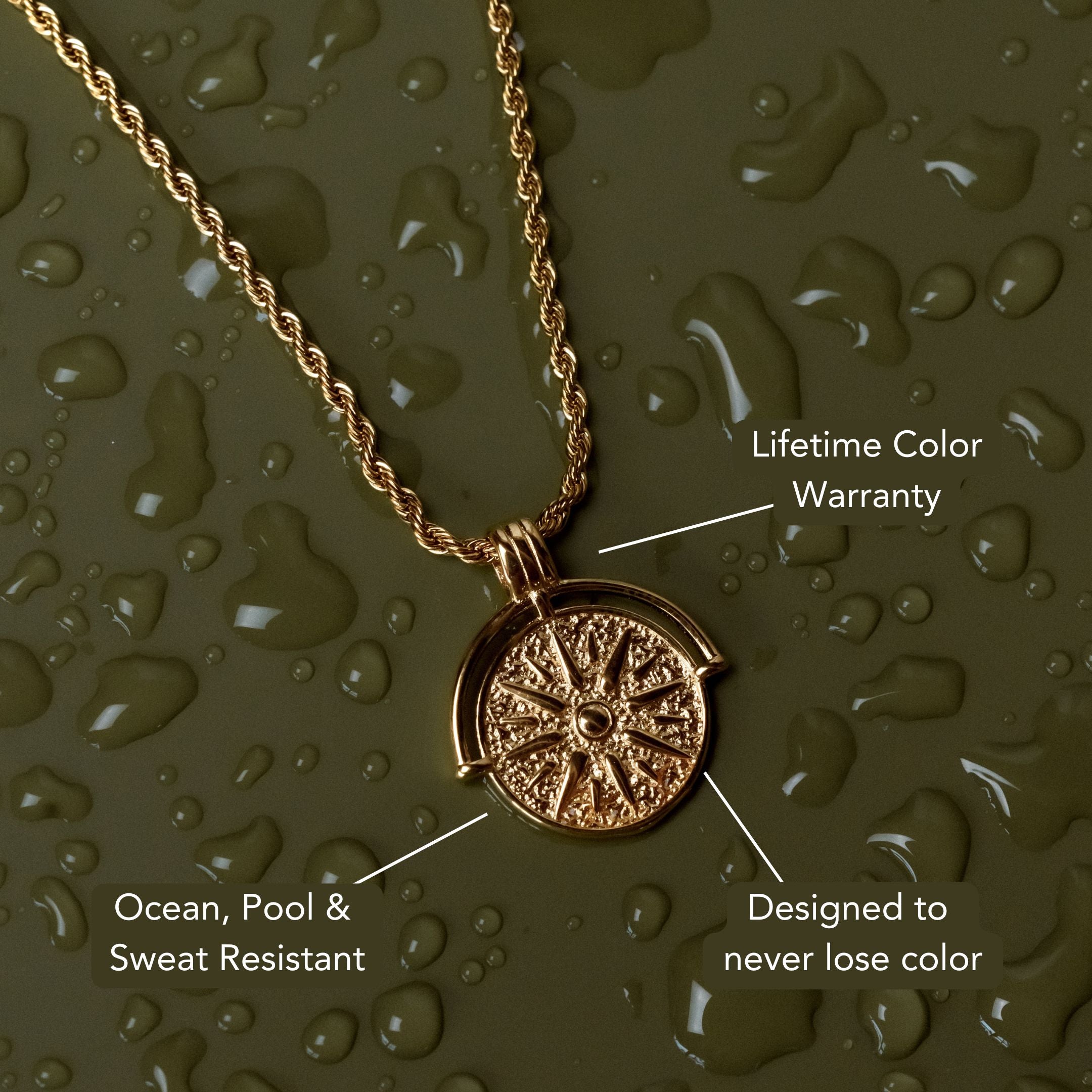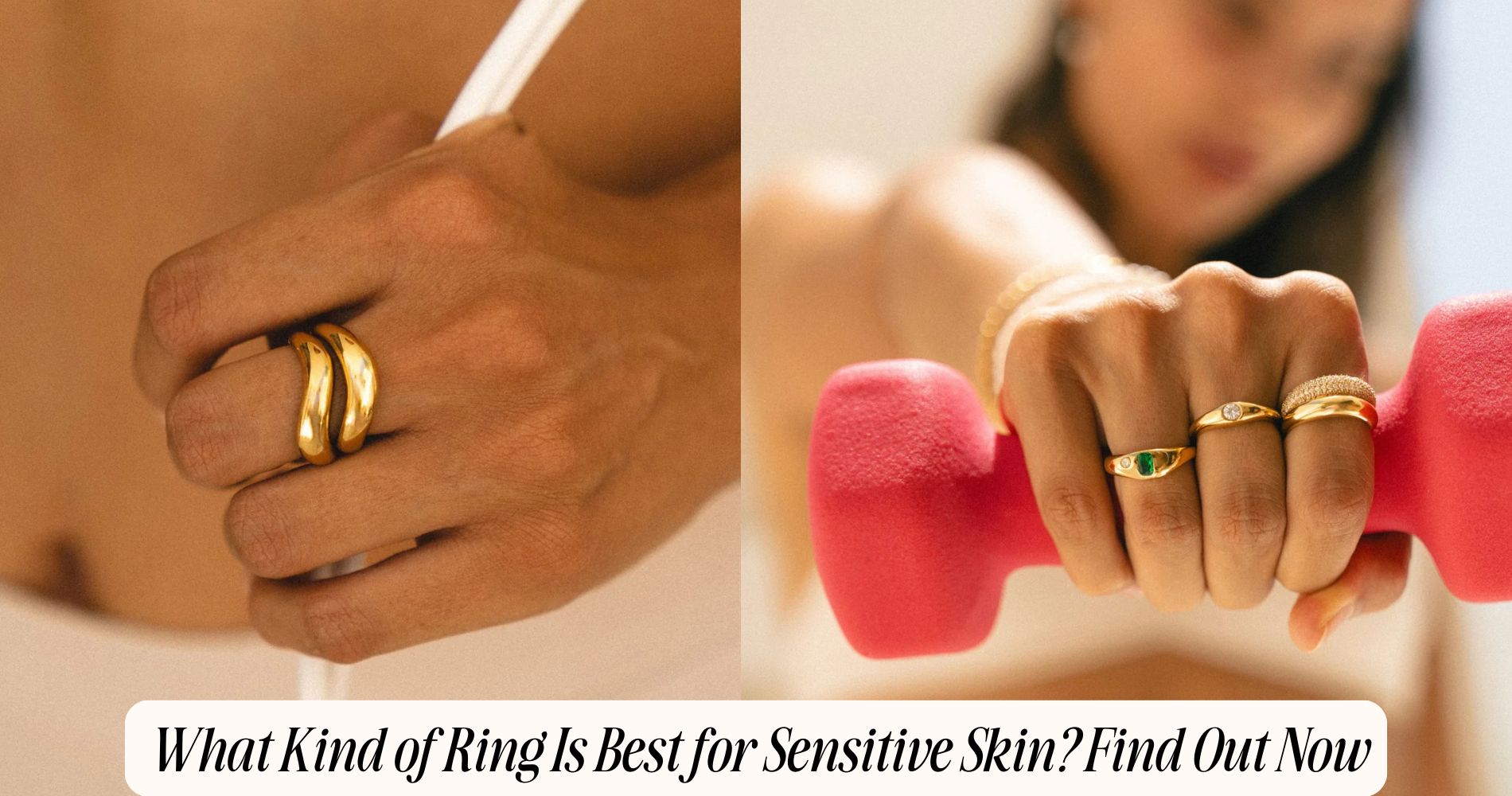
Are Waterproof Bracelets Safe for Swimming?
Are waterproof bracelets safe for swimming? It's a common question, especially since many are marketed as swim-proof. But the truth is, no bracelet is completely immune to water damage. Chlorine and saltwater can gradually wear down even high-quality materials like silicone, stainless steel, or titanium. Poor craftsmanship only increases the risk. Some people may even experience allergic reactions with prolonged exposure—especially if nickel is involved. If you're looking for a blend of style and durability, explore our dainty gold bracelet collection. But before you dive in, let’s take a closer look at what really makes a bracelet swim-safe.
Understanding the Term "Waterproof" in Jewelry
Many consumers encounter the term "waterproof" when shopping for jewelry, but it's crucial to understand its limitations and implications. You might assume that waterproof bracelets align with fashion trends and promise full protection against water exposure. However, the term "waterproof" isn't regulated in the jewelry industry, so manufacturers may use it loosely.
Advanced waterproof technology can improve resistance to water, but no bracelet is entirely impervious to all moisture, pressure, or chemical exposure over time. Even if a bracelet claims waterproof status, repeated swimming or contact with chlorinated or saltwater environments can degrade adhesives, finishes, or structural components.
Prioritizing evidence-based information helps you assess the actual risks and benefits before purchase. Always critically evaluate waterproof claims, especially if you intend to wear the bracelet while swimming.
Common Materials Used in Waterproof Bracelets
Understanding the limitations of "waterproof" claims means it's important to examine the materials that manufacturers choose for bracelets intended to withstand water exposure. You'll commonly find silicone, stainless steel, titanium, and nylon among the primary materials.
Silicone appeals to fashion trends due to its flexibility and wide color range, but it may degrade over time with repeated water contact.
Stainless steel and titanium offer superior resistance to corrosion and are hypoallergenic, making them suitable for sensitive skin.
Nylon, often used in woven bracelets with cultural significance, resists water absorption but can stretch or fray with prolonged wetness.
Always assess the construction—poor clasps or joints increase risk, even if materials are robust.
Understanding material properties helps you make informed, risk-conscious choices for swimming safety.
Effects of Chlorine and Saltwater on Bracelet Durability
Although waterproof bracelets are marketed for aquatic use, exposure to chlorine and saltwater presents distinct risks to their longevity. Chlorine effects include gradual degradation of certain polymers, elastomers, and metal finishes, particularly when bracelets are worn regularly in chlorinated pools. You might notice fading colors, weakened structural integrity, and increased brittleness over time.
Saltwater impact is equally significant; salt accelerates corrosion in metal components and can erode coatings intended to protect against water ingress. Salt crystals may also accumulate in porous or woven materials, leading to abrasion and eventual breakdown.
Both chlorine and saltwater can compromise adhesives and seals used in bracelet construction, increasing the likelihood of water penetration. To mitigate these risks, rinse your bracelet thoroughly after swimming in either environment.
How Different Bracelet Types Perform in Water
While manufacturers design waterproof bracelets for aquatic environments, their actual performance varies markedly based on construction materials and design features. Silicone bracelets, which dominate current fashion trends, resist water absorption and generally remain intact after prolonged swimming.
Stainless steel and titanium options offer high corrosion resistance but may incur higher initial costs; price comparisons reveal that these metals outperform cheaper alloys, which tend to degrade.
Fabric and leather bracelets, even when marketed as “waterproof,” often absorb moisture, leading to structural weakness or aesthetic deterioration.
Clasps and fasteners represent critical failure points—poor-quality components can rust or break, increasing loss risk.
You should evaluate technical specifications, especially IP (Ingress Protection) ratings, before purchase.
Factoring in both function and style helps mitigate risks when selecting a bracelet for regular water exposure.
Potential Skin Reactions and Allergies
Since waterproof bracelets remain in close contact with your skin for extended periods, they can trigger adverse dermatological reactions, especially if you have sensitivities to certain materials. Materials like nickel, silicone, and certain plastics are known to cause allergenic reactions in susceptible individuals.
If you have a history of skin sensitivities, you’re at higher risk for contact dermatitis, characterized by redness, itching, or blistering at the site of contact. Prolonged exposure to moisture under the bracelet can exacerbate these responses by disrupting your skin’s barrier, increasing permeability to potential irritants.
Always review product specifications and opt for hypoallergenic components if you’re prone to skin issues. If you notice persistent irritation or signs of an allergic response, discontinue use and consult a dermatologist.
Maintenance Tips for Prolonging Bracelet Lifespan
Proper care not only reduces the risk of skin irritation but also considerably extends the functional life of waterproof bracelets. To minimize degradation, rinse your bracelet with fresh water after exposure to chlorine or saltwater, as these chemicals accelerate material breakdown.
Dry thoroughly before wearing again to prevent microbial growth and material fatigue. Avoid storing in direct sunlight, which can cause fading—an important consideration if you’re influenced by fashion trends or celebrity endorsements promoting vibrant colors.
Inspect clasps and joins regularly for signs of wear, as microfractures increase failure risk. While some bracelet designs tout advanced coatings, improper maintenance can still compromise their waterproof integrity.
Adhering to these evidence-based maintenance steps helps you avoid premature deterioration, ensuring your bracelet remains both safe and stylish for repeated swimming sessions
Key Considerations Before Wearing Bracelets While Swimming
Although waterproof bracelets promise resilience, several technical factors demand attention before you wear them while swimming. You should first evaluate the bracelet’s water resistance rating and material science; not all “waterproof” claims withstand prolonged submersion or chlorinated environments. Metal elements may corrode, while certain plastics can degrade, impacting both function and appearance.
Fastening mechanisms must ensure a secure fit since water movement increases the risk of loss. Consider potential skin reactions, as moisture and friction may exacerbate sensitivities, especially with synthetic materials.
Fashion trends and personal style might tempt you to prioritize appearance, but safety and durability warrant greater scrutiny. Always review manufacturer guidelines and test the bracelet in less demanding conditions before exposing it to pool or saltwater environments.
Frequently Asked Questions
Can Waterproof Bracelets Be Worn in Hot Tubs or Saunas?
You should evaluate water resistance levels and material durability before wearing waterproof bracelets in hot tubs or saunas. Elevated temperatures and chemicals can degrade materials, potentially compromising waterproof seals and increasing the risk of bracelet damage or skin irritation.
Are Waterproof Bracelets Safe for Children to Wear While Swimming?
You should assess child safety and waterproof durability before allowing children to wear waterproof bracelets while swimming. Evidence shows most are safe, but inspect for secure clasps, non-toxic materials, and potential choking hazards to minimize risk.
Do Waterproof Bracelets Affect Fitness Tracker Accuracy in Water?
When you wear a waterproof bracelet while swimming, calibration and water resistance ratings impact your fitness tracker’s accuracy. Evidence shows water pressure and motion can disrupt sensor readings, so always verify manufacturer specifications to minimize performance risks.
Can Waterproof Bracelets Be Customized or Engraved?
You can choose bracelet customization and engraving options for waterproof bracelets, but guarantee the materials and engraving process maintain water resistance. Improper customization may compromise integrity, leading to water ingress and potential skin irritation or device malfunction.
Are Any Waterproof Bracelets Suitable for People With Metal Allergies?
If you have a metal allergy, you’ll want to choose waterproof bracelets made from hypoallergenic materials like silicone, plastic, or titanium. These materials reduce your risk of allergic reactions, unlike nickel-containing alloys, which often trigger sensitivities.
Conclusion
When you swim with waterproof bracelets, you’re relying on material claims that may not account for prolonged chlorine or saltwater exposure. Even high-grade silicone, stainless steel, and coated threads can degrade, increasing the risk of skin irritation or allergic reactions. While many brands promise durability, actual performance varies. To minimize risks, always check the manufacturer’s specifications, monitor your skin for reactions, and clean bracelets regularly. Careful use helps reduce potential health and durability concerns.























Leave a comment
This site is protected by hCaptcha and the hCaptcha Privacy Policy and Terms of Service apply.